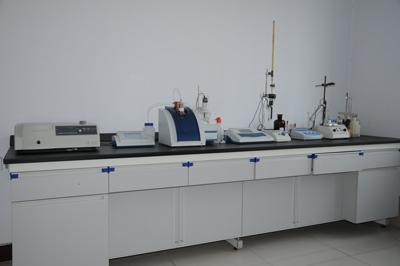Functions of Cationic Surfactant - Solubilization
Solubilization
Solubilization refers to the effect of the surfactant on increasing the solubility of poorly soluble or insoluble materials in water. For example, the solubility of benzene in water is 0.09% (volume fraction). If a surfactant (such as sodium oleate) is added, the solubility of benzene can be increased to 10%.
Solubilization is inseparable from the micelles formed by the surfactant in water. The micelles are micelles formed by the hydrocarbon chains in the surfactant molecules that are brought together in an aqueous solution due to hydrophobic interaction. The inside of the micelle is actually a liquid hydrocarbon, so non-polar organic solutes that are insoluble in water such as benzene and mineral oil are more soluble in the micelle. Solubilization is a process in which micelles dissolve the lipophilic substances and is a special effect of the surfactant. Therefore, only when the concentration of the surfactant in the solution is above the critical micelle concentration, there are more large micelles in the solution. Solubilization is only present, and the larger the micelle volume, the greater the amount of solubilization.
Different from solubilization and emulsification, emulsification is a discontinuous, unstable multiphase system obtained by dispersing a liquid phase into water (or another liquid phase). On the contrast, the solubilization results in a single-phase homogeneous stable system in which the solubilizing solution is in the same phase as the solubilized material. Sometimes the same surfactant has both emulsification and solubilization, but it only has a solubilization when its concentration is above the critical micelle concentration.
Related News
 January 25, 2019Alkyl betaine amphoteric surfactant is a good leather finisher which makes the leather more resistant to dry cleaning;The addition of a betaine amphoteric surfactant to an alkenyl rubber inhibits the ...view
January 25, 2019Alkyl betaine amphoteric surfactant is a good leather finisher which makes the leather more resistant to dry cleaning;The addition of a betaine amphoteric surfactant to an alkenyl rubber inhibits the ...view January 25, 2019An amphoteric surfactant refers to a surfactant having both an anionic and a cationic hydrophilic group, and thus the surfactant is cationic in an acidic solution, anionic in an alkaline solution, and...view
January 25, 2019An amphoteric surfactant refers to a surfactant having both an anionic and a cationic hydrophilic group, and thus the surfactant is cationic in an acidic solution, anionic in an alkaline solution, and...view January 25, 2019Foaming effectThe state in which the gas is dispersed in the liquid is called a bubble. If a liquid is easily formed into a film and is not easily broken, the liquid will produce a lot of foam when it...view
January 25, 2019Foaming effectThe state in which the gas is dispersed in the liquid is called a bubble. If a liquid is easily formed into a film and is not easily broken, the liquid will produce a lot of foam when it...view November 15, 2018test test test test test test test test test test test test test test test test test test test test test test test test test test testview
November 15, 2018test test test test test test test test test test test test test test test test test test test test test test test test test test testview January 25, 2019SterilizationThe quaternary ammonium salt bactericide has the property of an ionic compound, which is highly soluble in water and is insoluble in a non-polar solvent, with stable Chemical properties. ...view
January 25, 2019SterilizationThe quaternary ammonium salt bactericide has the property of an ionic compound, which is highly soluble in water and is insoluble in a non-polar solvent, with stable Chemical properties. ...view January 25, 2019Toothpaste is comprised of powder abrasivus, wetting agent, surfactant, adhesive, spices, edulcorant and other special ingredient. 1.AbrasivusThe commonly used abrasives in tooth paste include:① Calc...view
January 25, 2019Toothpaste is comprised of powder abrasivus, wetting agent, surfactant, adhesive, spices, edulcorant and other special ingredient. 1.AbrasivusThe commonly used abrasives in tooth paste include:① Calc...view







 +86-153 1652 1570
+86-153 1652 1570  robert@blamine.com
robert@blamine.com
 126B 3#,No. 438 Xinnongpuyin Street, Zhujing Town, Jinshan District, Shanghai City, China
126B 3#,No. 438 Xinnongpuyin Street, Zhujing Town, Jinshan District, Shanghai City, China